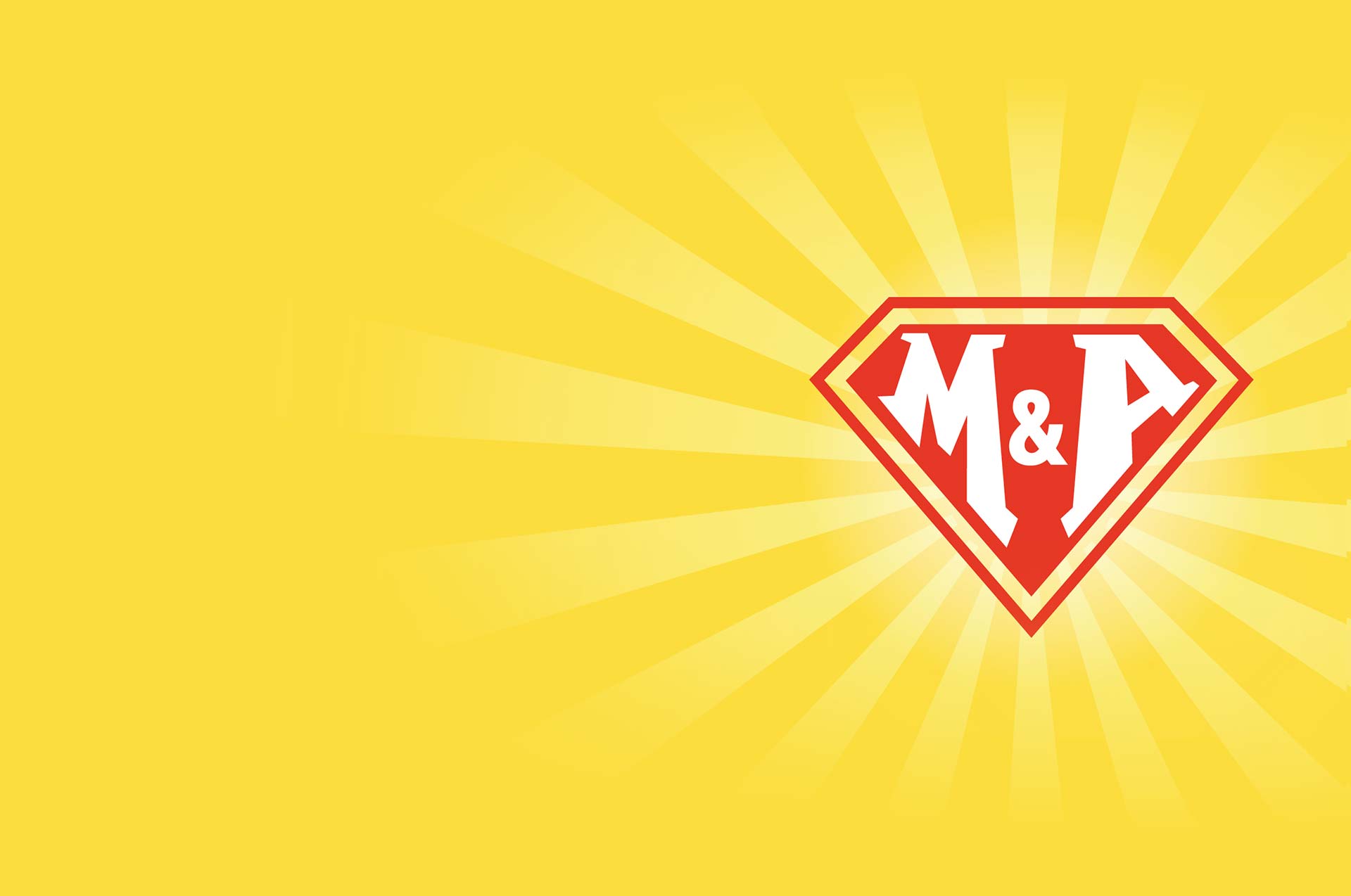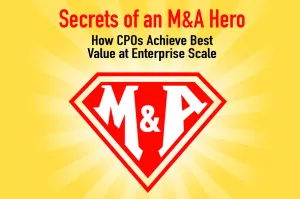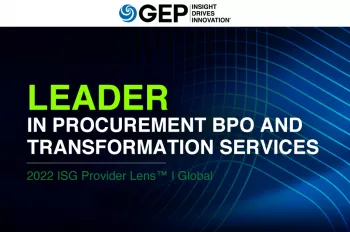Introduction
Most business integration value propositions rely heavily on cost reduction. In any merger or acquisition, it's procurement that generates a substantial amount of the near-term savings. Since a large number of business integration efforts fall short of the estimated total synergies, procurement is typically – and will remain – the major value driver in any merger or acquisition.
No wonder then, the C-Suite inevitably looks at procurement to drive maximum value from the deal. Procurement can rise up to this challenge through smart planning for future state design, Day 1 support, and capturing sourcing synergies.
This white paper explains how procurement leaders can realize best value at enterprise scale through well-planned and effective integration execution.
The Chief Procurement Officer is clearly in the spotlight post Day 1 of any merger or acquisition. But can the CPO emerge a hero or become a goat? It all depends on execution.
Most mergers or acquisitions depend on sourcing savings in the first year. Research indicates that around 30 to 50 percent of confirmed merger savings are due to procurement savings, most of which are expected to be realized in the very near-term. Studies show that M&A activities have an overall success rate of less than 50 percent — essentially, a coin toss, at best. Most mergers fail because of poor execution. Here's how CPOs can be ready to make the deal a success.
Once the merger or acquisition is publicly announced, it's time to focus on the most critical phase — planning. High-level, top-down estimates created by investment bankers cannot be used for real implementation planning. Further, in some cases, the CPO or Head of Procurement is either left out of the due-diligence process or under-resourced, which further complicates the problem of driving more value from procurement.
The CPO needs to ask and ensure: Is the plan executable? Is the plan Specific, Measurable, Attainable, Realistic, and Timely? Essentially, is the plan SMART? The CPO needs to push this agenda with the C-suite during the planning phase.
To ensure success, CPOs must focus on SMART planning for the following areas:
- Future State Design
- Day 1 Support
- Sourcing Synergies
Future State Design (FSD)
Decision makers should not assume that the acquired organization will be simply folded into the new company. Why? There may be pockets of excellence the acquiring organization should adopt. Or even better, the acquisition may have built, acquired, or outsourced world class source-to-pay tools or processes that should be adopted.
The reality is, the FSD team has the challenge of “assessing” the current state of both companies and then “envisioning” the future state. Decision makers should take every opportunity to “cherry pick” best-in-class talent, processes, and technologies.
Strategy and Policy
A launching point for the FSD assessment should be the evaluation of each procurement organization's strategies and policies. The following procurement areas should be reviewed, assessed, compared and evaluated:
- Business plans and budget
- Alignment with overall business strategy
- Internal controls and risk management
- Internal customer relationship management
- Tax and treasury strategy
- Supply material requirements planning
- Governance model
- Policies and procedures
Strategies and policies should be evaluated against a simple maturity model. During this process, executives also need to take into consideration the unique nature and requirements of both the organizations being integrated. For example, Dell's acquisition of Perot Systems, where a “hardware” company with a complex global supply chain acquired a BPO / IT services company. The business models of both the companies could be quite different and careful consideration should be given to which areas could be integrated and the areas that need to be left alone.
Once the strategy and policy assessment is complete, As-Is operational processes must be reviewed using a comprehensive source-to-pay (S2P) framework, such as the model in Figure 1. As can be seen, As-Is reviews can be grouped into Sourcing & Category Management Services, Procurement Operations (Req-to-Check), and Procurement Technology.
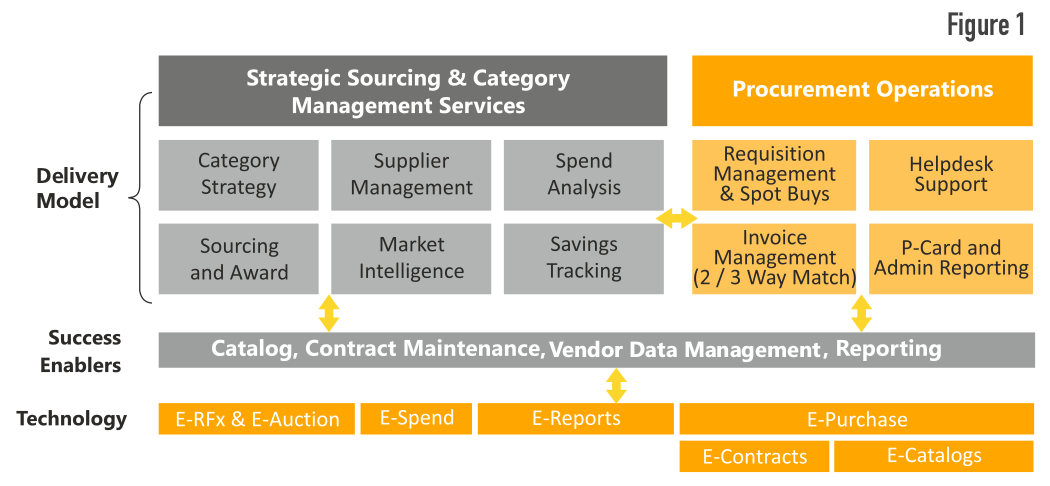
As noted before, strategies, policies, processes and technologies for each organization can be assessed using a maturity matrix. Each area can be compared against industry best practices and then ranked from good to poor. A sample assessment, as shown in Figure 2, will provide a framework to discuss integration options.
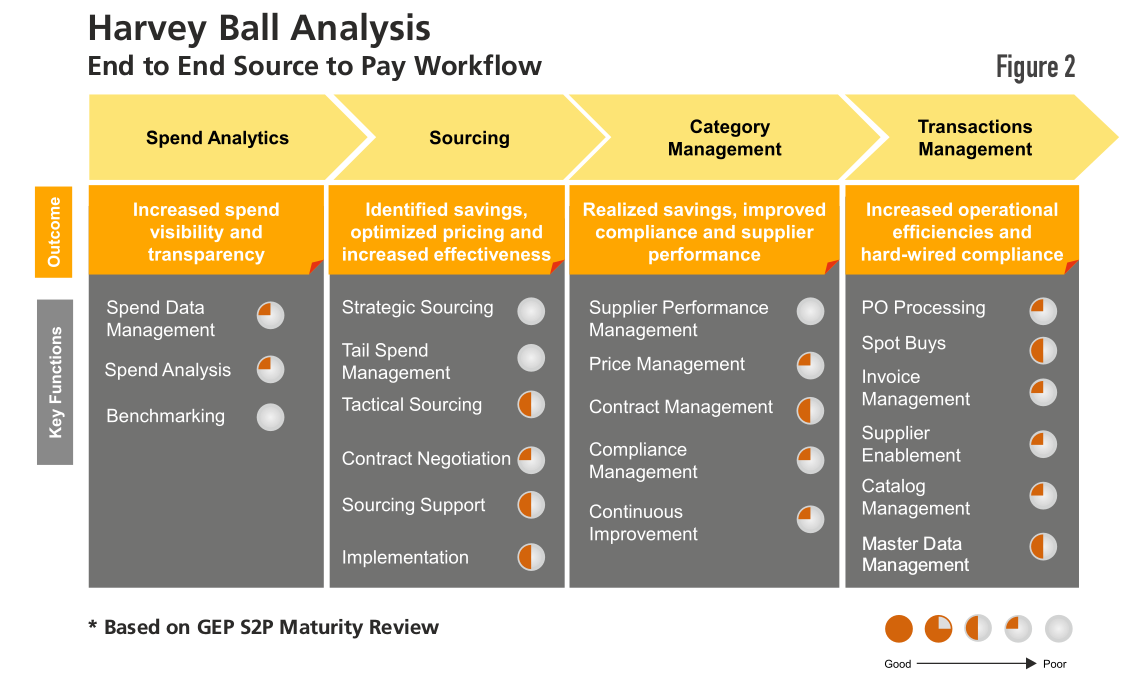
Day 1 Support
Day 1 teams are tasked with defining operational issues expected to occur on Day 1 of the change of control. Such issues could include Day 1 messaging to employees and changes related to supplier account teams, payment terms, branding, etc. Creating a small team to address Day 1 Support issues is important because it prevents distraction of FSD and Sourcing Synergies teams from their deliverables and sends an organized message to the entire S2P community that the CPO is organized, has a plan, and is focused on executing the plan.
Prior to Day 1, the team should have considered and addressed the following issues:
- Will all current contracts continue to exist and be effective for the new entity?
Some contracts have “change of control” terms and conditions which state that the contract is no longer valid if the customer is acquired. - Do any contracts have “sole source” provisions which state the vendor/supplier will be the exclusive provider of goods and/or services?
Sole source agreements are often used to negotiate better pricing and for co-marketing/co-branding. Resolving “sole source” issues will require input from a broad range of stakeholders across both companies. - What are the Day 1 and/or near-term operational requirements defined by executive management?Typically, these requirements include rebranding(trucks, uniforms, facility signage, business cards, etc.) and could apply to the acquired company or perhaps the newly combined entity.
- What is the Day 1 procurement organizational structure?
The CPO and direct reports should be selected in advance of Day 1, along with the near-term organizational structure. Internal communications should be developed, which includes a description of the near-term organizational structure; rules, procedures and systems changes; immediate Day 1 changes (if any); description of the other team activities (Future State Design, Day 1 Support, Sourcing Synergies, etc.); a list of “frequently asked questions”, among others.
It is important for the CPO to have a clear vision and roadmap to communicate internally as employees will have many questions and concerns. Finally, it is important that the CPO and executive management have a clear position on potential headcount changes and/or reductions. Essentially, the CPO will have to get ahead of the “rumor mill." - What is the Day 1 external messaging to the supply base?
An often overlooked fact is that suppliers may take it upon themselves to make changes which may or may not be in the best interest of procurement or their stakeholders. Typically, supplier account teams and sales reps assume that whoever has the account relationship with the acquiring company will subsequently be in charge of the combined entity. The risk is that “new” supplier account teams might displace other legacy employees who have detailed knowledge, subject matter expertise and experience that will be sorely missed if these employees are removed and/or replaced unilaterally.
The CPO should be prepared to send clear messages to the supply base which defines Day 1 expectations regarding account teams, operating assumptions, near-term required changes, etc. A formal letter explaining the CPO's position usually suffices.
Sourcing Synergies
The Sourcing Synergies team is focused exclusively on one area — savings, savings, and more savings. The Sourcing Synergies team should be tasked with identifying and accelerating the benefits associated with sourcing related synergies in 30-day, 90-day and six-month increments.
Sourcing-related M&A benefits are typically derived from three areas:
Immediate Contract Harmonization
Sometimes referred to as "cherry picking", contract harmonization involves working with the same suppliers and same specifications. The team must review contracts with common suppliers for same categories and then plan to immediately extend more favorable pricing and terms to both entities.
Target benefits realization: within 30 days
Mid-term Rapid Sourcing
This sourcing activity involves categories with same specifications but different suppliers. The team must conduct rapid sourcing leveraging best price benchmarks with incumbents and then switch contracts to suppliers with more favorable terms.
Target benefits realization: within 90 days
Long-term Strategic Sourcing and/or Relationship Leverage
This sourcing activity involves categories with different specifications and, at times, different suppliers.
When different suppliers are involved, the team should consider sourcing for high spend opportunities to market leading suppliers and ensure best-in-class pricing and terms are achieved using market benchmarking.
When the same suppliers are involved, the team should identify common suppliers that service different categories for both entities, and leverage total spend to renegotiate better pricing.
Target benefits realization: within six months, or slightly longer, depending on how a change in specs or suppliers may impact the business operations.
Figure 3 indicates the options available to the Sourcing Synergies team.
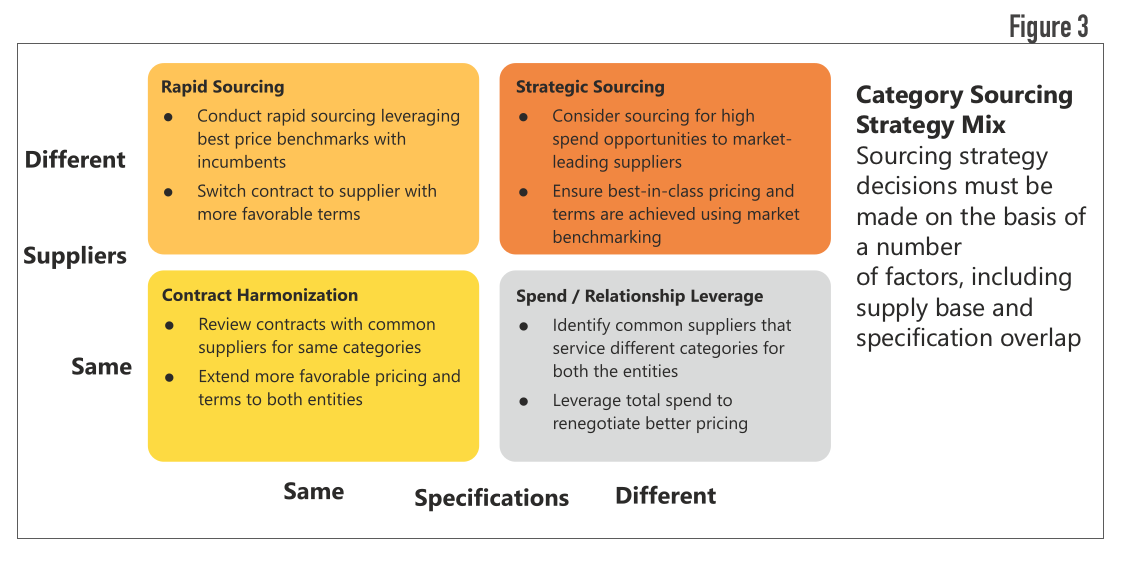
The key enabler for the Sourcing Synergies team is to have, in hand on Day 1, an executable plan specific to suppliers and addressing Day 1, 90-day, and 180-day activities. The complicating factor, however, is pre-closing legal restrictions that limit sharing of contract and pricing details between the two entities.
Fortunately, a “clean room” concept led by an independent third party organization can be utilized to develop granular, ready-to-launch execution plans. A focused Merger & Acquisition Procurement Synergy (MAPS) assessment can be completed in eight to 10 weeks, depending upon data availability and scale of the merger. Figure 4 outlines the major activities required for a MAPS assessment.
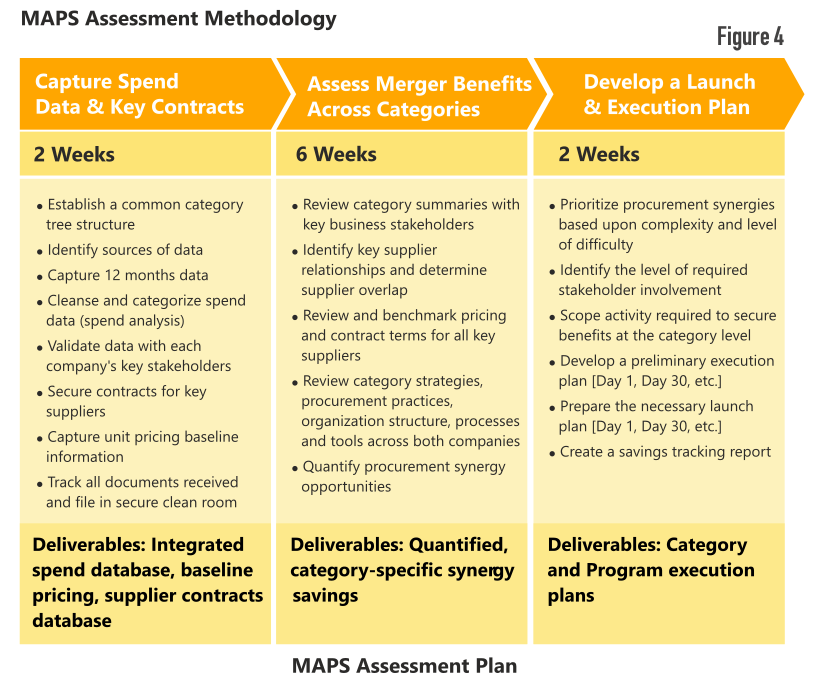
A key message to CFOs and CPOs: most of the value is not attributable to immediate contract harmonization or cherry picking. This issue calls for more focus on providing the Sourcing Synergy team a solid plan they can execute.
To Sum It Up
In any merger or acquisition, the onus will be on the CPO to deliver on Day 1 in a number of key areas including:
Smooth Day 1 + Operational Transition
The CPO must ensure that the Day 1 teams identify all Day 1 issues and resolve them and/or have a plan to resolve them before Day 1. These issues run the gamut from mundane (where to tell suppliers to send their invoices) to the strategic (communication of the procurement vision to stakeholders, rebranding of the acquisition or newly combined entity). Again, Day 1 work must be conducted pre-close.
Future State Design
This team and the CPO have the challenge of assessing the current state of both companies and then envisioning the “future state”. Decision makers should take every opportunity to “cherry pick” best-in-class talent, processes and technologies and “leapfrog” into a better business/operational model.
Sourcing Synergies Savings and M&A Economic Benefits
- Immediate contract harmonization savings/benefits within 30 days
- Mid-term rapid sourcing savings/benefits within 90 days
- Longer term strategic sourcing and/or relationship leverage savings and benefits within six months
Any one of these three key areas can consume virtually all of the CPO’s mindshare. Nonetheless, they all must be done equally well to be successful. The CPO's job is to ensure that the right internal and external resources are made available to deliver an executable plan for future state design, Day 1 support, and sourcing synergies. Each plan must be SMART — Specific, Measurable, Attainable, Realistic, and Timely. The CPO needs to push this agenda with the CFO and CEO, and work with them to develop the integration plan.
